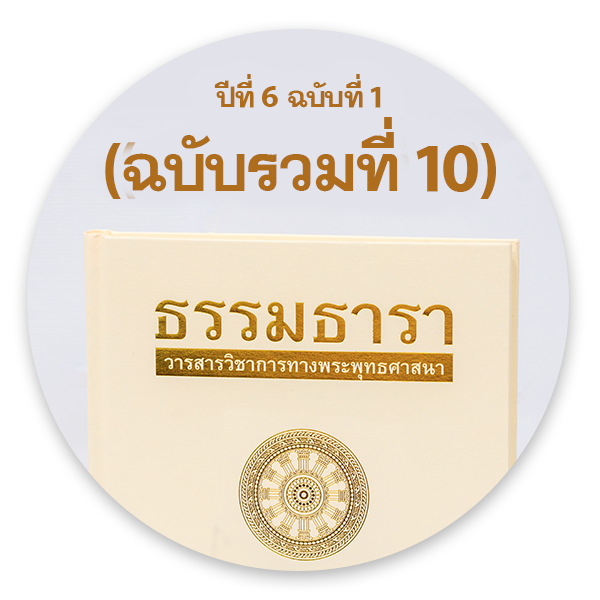A Comparative study on Patterns of Mind Development of Five Meditation Lineages in Thai Society
Main Article Content
Abstract
This research has three objectives: (1) to study the principles of mind development according to the texts of the Theravāda Buddhist scriptures, (2) to study mind development in five meditation lineages in Thai society, and (3) to compare the patterns of mind development in five meditation lineages Thai society. This research was conducted through the use of a documentary from the Theravāda Tipiṭaka, Visuddhimagga, and books about meditation from five meditation lineages.
In the research, it was found that the principles of mind development found in the Theravāda Tipiṭaka are systematically described with the threefold training: morality, concentration and wisdom. Therefore, the development of mind is basically referred to at the level and process of practice as appears in Ānāpānasti-sutta and the Satipatthāna-sutta, which all ascetics always follow. In the Visuddhimagga, the systematic practices based on morality, concentration and wisdom are also prescribed wherein the practice of forty meditation techniques are mentioned, including sixteen insight meditation practices. Both practices are aimed at the same goal, the attainment of Nirvāna.
A study on mind development of these five main lineages in Thai society reveals that: 1) The “Buddho” bhāvanā lineage relies upon the recitation technique with respect to tranquility meditation (samatha) as well as the contemplation of the elements of the body (dhātu) and five aggregates (khandha) with respect to insight meditation (vipassanā). This is an intense practice 2) The Anāpānasati-bhāvanā lineage employs the sixteen steps while practicing the mindfulness of breathing. This technique is applicable to both ordinary practice and extraordinary practice. 3) The “Yoob-nho, pong-nho” bhāvanā lineage utilizes the foundations of mindfulness in observing the inflation and deflation of the abdomen. This technique is both a normative and an intense practice. 4) The Rūpanāma-bhāvanā lineage exerts the foundations of mindfulness in contemplating the materiality and mentality (rūpa-nāma) pertaining to the four main postures (iriyāpata). This is an intense practice. 5) The “Sammā-arahang” bhāvanā lineage mainly employs objects of visualization (nimitta) together with the recitation Buddhist words “Sammā Arahang”. This method is pertinent to both ordinary and extraordinary practice.
The patterns of mind development in these five meditation lineages were established around the 20th century. These patterns are compatible with the concepts in Buddhist scriptures. Though the goal of all five patterns is to attain Nirvāna, there are some aspects of difference in practice technique, activity, teaching and assessment.
Article Details

This work is licensed under a Creative Commons Attribution-NonCommercial-ShareAlike 4.0 International License.
ลิขสิทธิ์ สำนักการศึกษา วัดพระธรรมกาย
References
─1. คัมภีร์
มหาจุฬาลงกรณราชวิทยาลัย. พระไตรปิฎกภาษาบาลีฉบับมหาจุฬาเตปิฏกํ 2500. กรุงเทพมหานคร: โรงพิมพ์มหาจุฬาลงกรณราชวิทยาลัย, 2500.
มหาจุฬาลงกรณราชวิทยาลัย. พระไตรปิฎกภาษาไทย ฉบับมหาจุฬาลงกรณราชวิทยาลัย. กรุงเทพมหานคร: โรงพิมพ์มหาจุฬาลงกรณราชวิทยาลัย. 2539.
─2. หนังสือ
แนบ มหานีรานนท์. แนะแนวทางการปฏิบัติวิปัสสนา วิสุทธิ 7, พิมพ์ครั้งที่ 5. กรุงเทพมหานคร: บริษัทเคล็ดไทย จำกัด, 2548.
พระพรหมคุณาภรณ์. พุทธธรรม ฉบับปรับขยาย, พิมพ์ครั้งที่ 40. กรุงเทพมหานคร: สำนักพิมพ์ผลิธัมม์, 2557.
พระพุทธโฆสเถระ. คัมภีร์วิสุทธิมรรค 100 ปี สมเด็จพระพุฒาจารย์ (อาจ อาสภมหาเถระ), พิมพ์ครั้งที่ 10. กรุงเทพมหานคร: บริษัท ธนาเพรส, 2555.
พระมหาบัว ญาณสัมปันโน. ปฏิปทาของพระธุดงคกรรมฐาน สายท่านหลวงปู่มั่น ภูริทัตตะ. กรุงเทพมหานคร: สำนักพิมพ์สุภา, 2551.
พุทธทาสภิกขุ. อานาปานสติสมบูรณ์แบบ. พิมพ์ครั้งที่ 9. กรุงเทพมหานคร: ธรรมสภา, 2535.
วริยา ชินวรรโณ และคณะ. สมาธิในพระไตรปิฎก. กรุงเทพมหานคร: สำนักพิมพ์แห่งจุฬาลงกรณ์มหาวิทยาลัย, 2543.
วริยา ชินวรรโณ และคณะ. สมาธิในพระไตรปิฎก วิวัฒนาการการตีความคำสอนเรื่องสมาธิในพระพุทธศาสนาฝ่ายเถรวาทในประเทศไทย, พิมพ์ครั้งที่ 1. กรุงเทพมหานคร: สำนักพิมพ์แห่งจุฬาลงกรณ์มหาวิทยาลัย, 2543.
วัดหลวงพ่อสดธรรมกายาราม. คู่มือปฏิบัติ สมถวิปัสสนากรรมฐาน 5 สาย. นครปฐม: เพชรเกษม พริ้นติ้ง, 2553.

